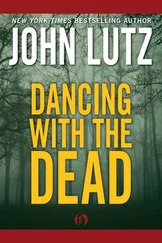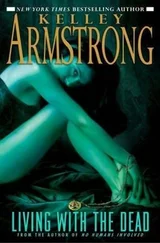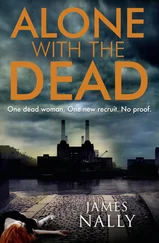How nice to know that in other cultures Eve was a man. I secretly felt sorry for the husband.
‘I told that story to a men’s group, and man, they hated it. Their reaction was, “Well, the husband did probably know more about eagles than the wife.” Can you believe that? They refused to put any blame on the guy. It got to be real sexist.’ Akbar went on to explain that there had lately been a rash of baby killings in Atlanta, which was why he felt uncomfortable telling the tale right now. ‘A story’s only half the equation,’ he said. ‘The context you tell it in makes all the difference, twists the meaning. Ignore the context and you’re being irresponsible. Look, if I were to tell that story in this city right now, who knows what message people would hear. I don’t even know what it means. The context,’ reiterated Akbar Imhotep, in Joel Chandler Harris’ garden, ‘is everything.’
When a billboard on the way to Cyclorama, just south of downtown Atlanta, told me ‘Jesus Was A Vegetarian’, I immediately resolved to keep a record of interesting highway signage.
During the morning I had become infatuated with circuitousness: everything I had encountered at the Wren’s Nest seemed to wind back up on itself. So I decided to conclude the day with a visit to Cyclorama. It seemed fitting to visit a narrative where the end literally merged with the beginning.
Cyclorama is billed as the world’s largest painting. It is fifty feet wide by nine hundred feet long, stretched on a circular canvas in the middle of which is a small, rotating auditorium. All of this is housed in a rather grand building in Grant Park, a leafy spot in Southeast Atlanta where everyone else seemed intent on going to the zoo. In the eighteenth and nineteenth centuries cycloramas were authentic marvels. When they came to town with a circus – which is how this one wound up in Atlanta – people would come out in droves and spin around while the painting stood still: motion pictures with the onus of motion on the viewer. Once there were three hundred cycloramas cluttering the earth, now there are only twenty. This one, which was inexplicably painted by a troupe of Polish and German immigrants in the 1880s, depicts a bloody day (22 July 1864) in the Battle of Atlanta.
I crawled up into the rotating auditorium and immediately felt seasick. I fixed my eyes on a railing at the bottom and watched it move against the stationary backdrop of what looked like paint-by-numbers carnage. It was like being on board ship, except that Sherman’s army was standing in for the sea, the men’s blue jackets far outnumbering the Rebels’ nobly tattered gray.
‘Now, the blue is the Union, the gray is the Confederacy,’ explained a mother to her two little boys – my only cyclomates, but a welcome step up from stuffed animals. ‘Oh good,’ said one child, ‘we’re the gray.’
I guess I over-extended my metaphor. Cyclorama was pretty corny. The foreground was strewn with bushes and mannequins to lull us into seeing three-dimensionality (it didn’t work). When we stopped spinning I jumped out of my seat to leave, only to find we had completed just one of two revolutions. A voice on the loudspeaker told me to sit down. This time around – only because a guide pointed it out – I noticed something. Amongst the mayhem of bayonets and dying soldiers (one of whom had been touched up to look like Clark Gable) and dead horses and smoking ruins – imagine sixteen thousand feet of this – was one woman and one African-American man.
Now I happen to know that amid the six hundred and twenty-five soldiers and five hundred and five animals in the Bayeux Tapestry there are only two women, one of whom has a name: an embroidered nun named Aelthgyva, who appears to have done something untoward with a monk. Aelthgyva is far more interesting than the red blur in a dress depicted in Cyclorama. But having just learned that two hundred thousand black soldiers fought for the Union in the Civil War in 1864 and ‘65, the inclusion of one token black man seemed grudging, to say the least.
The problem with Cyclorama, and with circular orbits in general, is that they confuse the eye, and the eye confuses the mind. Is the painting spinning around us, or are we turning while the painting stands still? This afternoon we were the ones in motion, but it didn’t seem so; we – the two little blond boys, their mother, and I – were nestled securely in the center of our universe, just as the Polish and German artists had been. What we thought we saw revolving around us was just a reflection of our story, not history.
I left Cyclorama still awaiting its Copernicus.
Colonel Rod’s Tale
I HAD ALL DAY TO GET FROM CENTRAL GEORGIA, where I had stayed at a Budget Inn after breaking out of Atlanta’s endless spaghetti junctions, to Hernando, Florida: a more or less straight journey of about four hundred miles. The air conditioner at the motel had tirelessly pumped a bad smell into the room (decaying rodent? dead body? sewage?), so after what would become my standard breakfast of bad coffee with non-dairy cream and a Krispy Kreme donut, I thankfully took to the road.
There wasn’t much difference between the Interstate and the secondary highways. The latter threaded through cultivated fields, watermelon patches, a few pecan orchards, pine groves baked to the scent of turpentine, and towns so small that only the change in speed limit – from 55 mph to 35 – affirmed their existence. Carwashes did a big business here in this dusty, rural world. I noticed that most of the large, formerly fine houses were in ruins; the smaller ones, without exception, brokered with the street through either open or screened-in front porches. (The architectural record in southern Georgia, and, as I was later to discover, much of the South, tells a tale of uneven wealth. The older housing stock – pre 1930, at a guess – consists on one hand of large, multistory homes and mansions, and, on the other, of small, one-level shacks and bungalows. Most middle-size, middle-income homes are post Second World War) When I stopped by the roadside to drink a Coke, the metal on my sunglasses holder got so hot in the sun it actually burned my skin.
Interstate 75, by way of contrast, offered cultivated fields, watermelon patches, a few pecan orchards, pine groves – and lots of signs. ‘Shelled Pecans!’ ‘We Bare All! Couples Welcome!’ (that from an ‘adult’ bar that seemed to have spent a fortune on advertising). ‘Jesus is Lord at the World Famous Catfish House. All You Can Eat!’ And, from a mysterious series of black billboards with white lettering, ‘You Think It’s Hot Here? – God.’
I tried to fill in the blanks between signs – together they held the makings of a spanking tale of sin and redemption – but my attention was ultimately claimed by the road itself. The Southern sun nearly beat the blackness out of the blacktop. It shone so hard on the macadam that every fleck of quartz or mica in the road surface glinted white, tinting the Interstate the glittering, grainy silver-gray of an old-fashioned movie screen. My parents had a screen like that when I was a child, on which they had shown slides for family entertainment on Sunday evenings. Now, from my mind’s eye, I projected the same images I’d once seen in our living-room onto Route 75: my grandmother wearing a visor hat, cotton dress blowing in the wind, squinting against the sun; my brother looking uncomfortable in a pair of tight Hawaiian shorts; me posing like Marilyn Monroe with a tiny fish I’d caught. All of us silent and still on a distant Northern beach.
Or maybe not so still. In my memory the family is gathered watching slides when – inevitably – one of the screen images waves to us. My mother nudges me and says, ‘There! Did you see? Wave back to yourself!’ And we all laugh and wait for the next small miracle to occur. It’s like a household secret, these ghosts of our living selves left behind to carry on being young and warm and on holiday, not just in memory but in the photographic record. My parents tell me this never happened. ‘You must have been dreaming,’ said my father. I don’t know. If it were a dream, wouldn’t the slides have spoken as well? In my memory bank of images, we are always silent.
Читать дальше












